NAKANISHI PREMIUMなかにしプレミアム
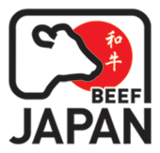

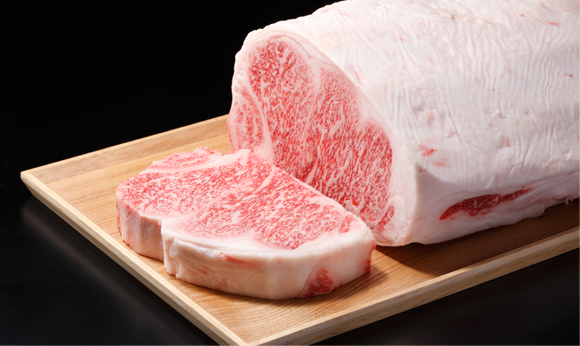
This is a Japanese black breed of cattle raised and fattened within Miyazaki Prefecture, and according to the ranking of the Japan Meat Grading Association (public company), this has the meat quality grade of 4 or above, and are thus proven bulls within the prefecture or first generation of bulls specified for livestock improvement.
”Miyazaki Beef” (Miyazakigyu, Miyazakiushi) is registered as a registered collective trademark.

”home grown wagyu”: bred and grown in the same farm=enhancing Nakanishi Premium (not procuring external cattle and growing them at the farm.)
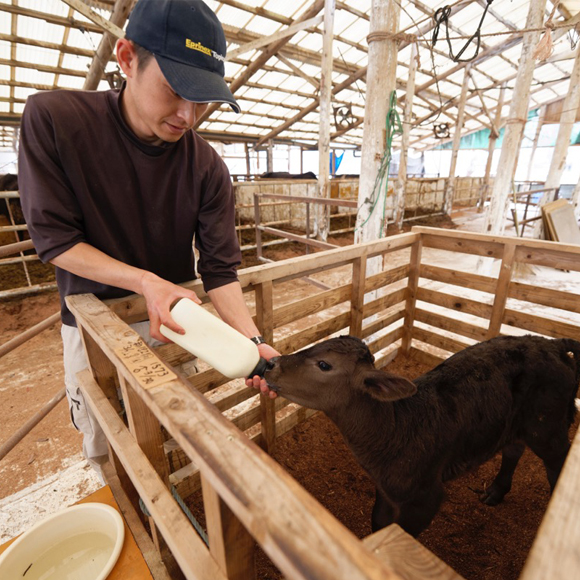
Nakanishi wagyu continues to strictly keep to a growth period of 28 months or more. The growth period is the necessary period for raising its quality, providing the wagyu-specific
taste, flavor, and fragrance, of the meat.
As a worldwide trend (and this trend is also clearly occurring in Japan), growth is being speeded up to increase the efficiency of livestock through the use of feed containing hormones and pharmaceuticals, thus shortening the growth period for rearing and shipping. This has greatly reduced the livestock rearing costs.
However, this method of nurturing cannot be used to create the meat known as wagyu. (in the world there growth periods of approximately half the period of wagyu, and even in Japan, wagyu with growth periods short of 20 months are appearing). Nakanishi wagyu is strictly observing the growth period in order to reliably maintain the quality of wagyu.
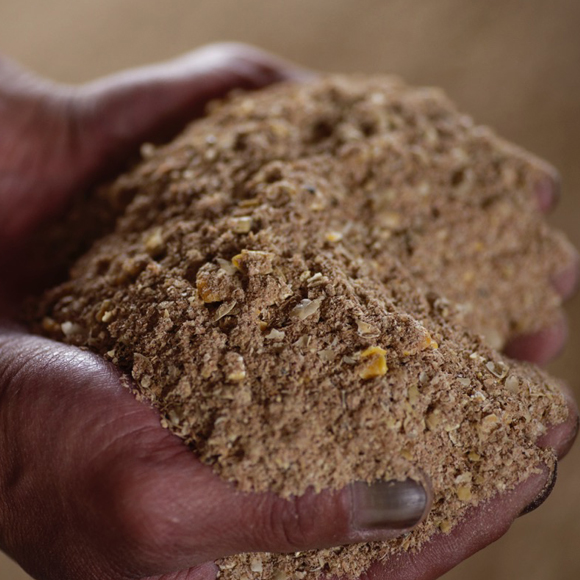
The Kirishima mountain range can be gazed on from the farm. They are fully utilizing the smooth mineral-rich water source, at the foot of Mt. Kirishima, chosen as one of the select best waters in Japan. The cattle grow, drinking large quantities of this water.
Drinking the mineral-rich, beautiful water from when they are calves, they grow up to be healthy cows. This beautiful, rich water source (natural environment) is essential for raising high quality wagyu. At the same time, farms that can receive the blessings of this kind of environment are rare.
Further, from their experience of fattening, exceeding 40 years, they have produced know-how on mixtures of feed. They have mixed soybean meal, corn hull, rice flour, mirin lees, and brewer’s grain , based on the cows.
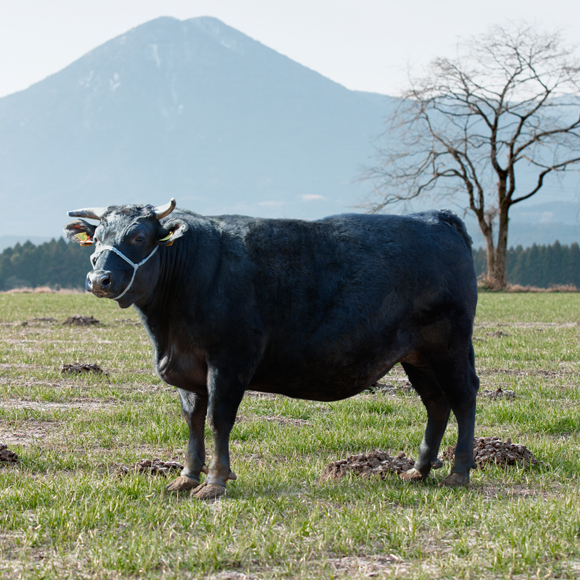
Nakanishi wagyu (Nishinoharu farm) constantly raises 2,000 head of cattle receiving the blessings from the foot of Mt. Kirishima.
The average number of wagyu cattle in Japanese farms is said to be between 100-200 cattle.
There are a wide variety of fattening methods and qualities depending on the farm. For example, even in the case of Miyazaki beef, there are a wide variety of flavors and quality depending on the farms. Large exporters of wagyu collect and export wagyu from farms throughout the country. Almost no exporters deal only with a single farm. (Therefore, even if the wagyu from the same region is specified, there will be inevitably be a disparity)
NAKANISHI Premium WAGYU, using the farming methods accumulating selectivity and fattening know-how, are carefully raised one-by-one, and the number of cattle have been increased.
Therefore, it is possible to “provide wagyu with stable quality” without quality differences.